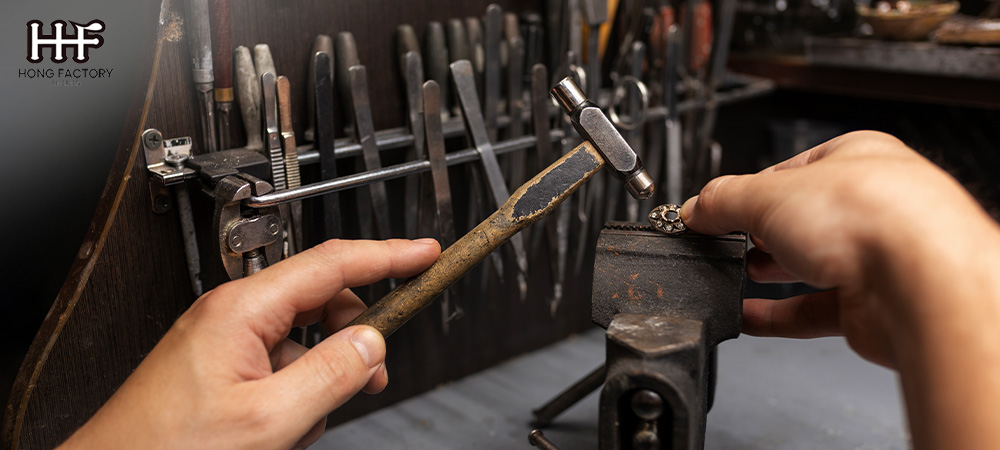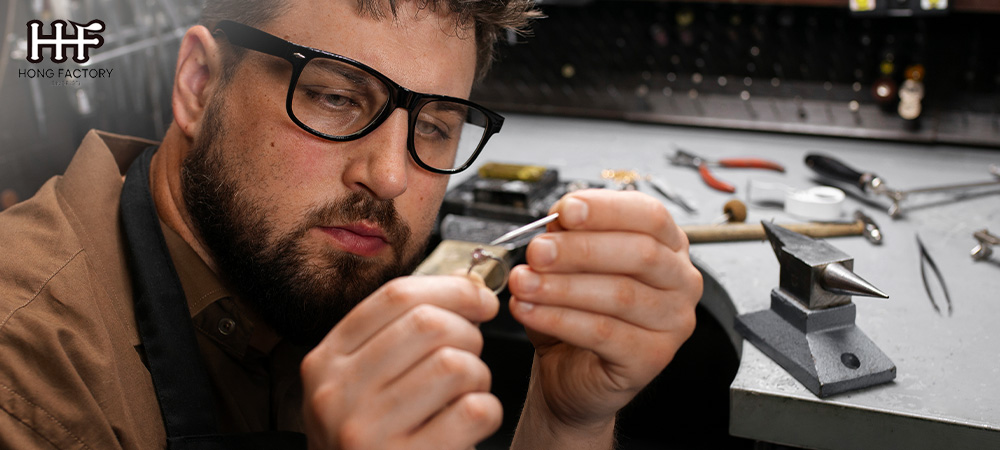The jewelry industry is a dynamic and ever-evolving sector, with Original Equipment Manufacturer (OEM) jewelry manufacturers playing a pivotal role in shaping its landscape. These manufacturers are responsible for producing high-quality jewelry pieces that cater to international markets, ensuring that the products meet the diverse tastes and preferences of consumers worldwide. This article delves into the world of OEM jewelry manufacturer, exploring the factors that contribute to international market quality, the challenges faced by manufacturers, and the future trends shaping the industry.
Understanding OEM Jewelry Manufacturing
What is OEM Jewelry Manufacturing?
OEM jewelry manufacturing involves producing jewelry pieces based on designs and specifications provided by another company. In this model, the OEM manufacturer is responsible for creating products that align with the brand identity and quality standards of the client company. This approach allows brands to focus on marketing and sales while leaving the production process to specialized manufacturers.
The Role of OEM Manufacturers in the Jewelry Industry
OEM manufacturers are integral to the jewelry industry for several reasons
- Expertise and Specialization : They possess specialized knowledge and skills in jewelry production, ensuring high-quality craftsmanship.
- Cost Efficiency : By outsourcing production, brands can reduce costs related to labor, materials, and infrastructure.
- Scalability : OEM manufacturers can handle large-scale production, allowing brands to meet increasing demand without compromising quality.
- Innovation : These manufacturers often invest in advanced technologies and techniques, leading to innovative designs and improved product quality.

Factors Contributing to International Market Quality
High-Quality Materials
The foundation of any high-quality jewelry piece lies in the materials used. OEM manufacturers source premium materials such as gold, silver, platinum, and gemstones from reputable suppliers. Ensuring material authenticity and quality is crucial for maintaining international market standards.
Advanced Manufacturing Techniques
OEM jewelry manufacturer employ state-of-the-art techniques to produce intricate designs with precision. Techniques such as Computer-Aided Design (CAD), 3D printing, and laser cutting enable manufacturers to create complex patterns and detailed engravings that appeal to global consumers.
Skilled Craftsmanship
The expertise of skilled artisans is indispensable in achieving international market quality. These craftsmen bring designs to life with meticulous attention to detail, ensuring that each piece meets the highest standards of artistry and finish.
Stringent Quality Control
To maintain international market quality, OEM manufacturers implement rigorous quality control measures throughout the production process. This includes regular inspections, testing for durability and safety, and adherence to industry regulations and standards.
Challenges Faced by OEM Jewelry Manufacturer
Global Competition
The global jewelry market is highly competitive, with numerous manufacturers vying for a share of the market. OEM manufacturers must continuously innovate and improve their offerings to stand out from competitors.
Fluctuating Raw Material Prices
The cost of raw materials such as gold and gemstones can fluctuate significantly due to market dynamics. These fluctuations can impact production costs and profit margins for OEM manufacturers.
Intellectual Property Concerns
Protecting intellectual property is a significant challenge in the jewelry industry. OEM manufacturers must ensure that their designs are not replicated or counterfeited by competitors.
Adapting to Consumer Trends
Consumer preferences in the jewelry market are constantly changing. Manufacturers must stay abreast of trends such as sustainable sourcing, ethical production practices, and personalized designs to remain relevant in international markets.
Future Trends in OEM Jewelry Manufacturing
Sustainable Practices
As environmental awareness grows, consumers are increasingly demanding sustainable practices from jewelry brands. OEM manufacturers are adopting eco-friendly materials and processes to reduce their environmental impact and appeal to conscious consumers.
Technological Advancements
Technological innovations continue to transform the jewelry manufacturing process. The use of AI-driven design tools, blockchain for supply chain transparency, and augmented reality for virtual try-ons are some trends shaping the future of OEM jewelry manufacturing.
Customization and Personalization
Personalized jewelry is gaining popularity among consumers seeking unique pieces that reflect their individuality. OEM manufacturers are leveraging technology to offer customization options, allowing customers to design their own pieces or personalize existing designs.
Expansion into Emerging Markets
Emerging markets present significant growth opportunities for OEM jewelry manufacturer. As disposable incomes rise in regions such as Asia-Pacific and Latin America, demand for high-quality jewelry is expected to increase.

The Importance of Quality Assurance in OEM Jewelry Manufacturing
Implementing Robust Quality Assurance Protocols
Quality assurance is a cornerstone of OEM jewelry manufacturing, ensuring that each piece meets the highest standards before reaching the market. Manufacturers implement comprehensive quality assurance protocols that encompass every stage of production, from raw material selection to the final inspection of finished products.
- Material Verification : Before production begins, manufacturers verify the authenticity and quality of raw materials. This involves testing gemstones for clarity and color, as well as ensuring that metals meet purity standards.
- Process Monitoring : Throughout the manufacturing process, continuous monitoring ensures that each step is executed with precision. This includes checking for consistency in casting, soldering, and setting techniques.
- Final Inspection : Once a piece is completed, it undergoes a thorough final inspection. This involves examining the jewelry for any defects, such as scratches or misalignments, and ensuring that it meets design specifications.
Certifications and Standards
To enhance credibility and trust among international clients, many OEM jewelry manufacturer pursue certifications that validate their commitment to quality. These certifications often include:
- ISO 9001 : This certification demonstrates a manufacturer’s ability to consistently provide products that meet customer and regulatory requirements.
- Responsible Jewellery Council (RJC) Certification : RJC certification indicates adherence to ethical, social, and environmental practices throughout the supply chain.
- Fairmined Certification : For manufacturers focusing on sustainable practices, Fairmined certification ensures that gold and other precious metals are sourced responsibly.
Building Strong Partnerships with International Brands
Collaborative Design Process
Successful OEM jewelry manufacturer foster strong partnerships with international brands through a collaborative design process. By working closely with clients, manufacturers can better understand brand aesthetics and target market preferences. This collaboration often involves:
- Design Workshops : Conducting workshops where designers from both parties brainstorm ideas and refine concepts.
- Prototyping : Creating prototypes to visualize designs and make necessary adjustments before mass production.
- Feedback Loops : Establishing feedback loops to incorporate client input at various stages of development, ensuring alignment with brand vision.
Transparent Communication
Transparent communication is essential for maintaining strong relationships with international clients. OEM manufacturers prioritize open dialogue to address any concerns promptly and ensure smooth project execution. Key aspects include
- Regular Updates : Providing clients with regular updates on production progress and any potential delays.
- Clear Documentation : Ensuring all agreements, design specifications, and quality standards are clearly documented to avoid misunderstandings.
Conclusion
OEM jewelry manufacturer play a crucial role in delivering high-quality products to international markets. By focusing on premium materials, advanced techniques, skilled craftsmanship, and stringent quality control measures, these manufacturers ensure that their products meet global standards. Despite challenges such as global competition and fluctuating raw material prices, OEM manufacturers continue to innovate and adapt to changing consumer preferences. As sustainability, technology, customization, and emerging markets shape the future of the industry, OEM jewelry manufacturer are well-positioned to thrive in an increasingly competitive landscape.

